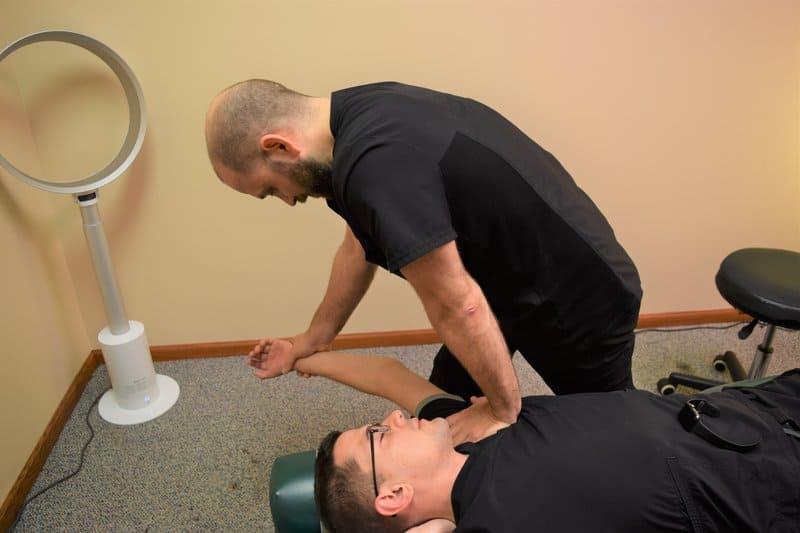Understanding the Risks and Precautions of Chiropractic Care
Chiropractic care has gained popularity as a treatment option for musculoskeletal conditions in recent times, more so with neck and spine pains. Understandably, many who seek these remedies come out with some level of satisfaction, so it is vital to look into what might go wrong and how to mitigate those risks. Just like any other procedure one undergoes, chiropractic manipulation has its disadvantages. Recognizing the strictures and barriers in place should serve to enhance the well-being of the patient as well as the effectiveness of the treatment protocol used. The purpose of this blog is to address common misconceptions regarding chiropractic care and other common concerns including side effects, safety measures, and the best practices regarding the procedure. What are the most common side effects of chiropractic care? In most cases, the patients are likely to experience mild soreness or discomfort or fatigue after an adjustment. The effect hovers about 24 hours and 48 hours as the body adjusts to the new configuration which is rather normal, however. Treatment typically includes spinal manipulation in order to restore normal physiological function and structure, but the connective tissues of muscles and joints may still ache as they adapt to the new positioning. It should be noted that this kind of discomfort usually lasts for a day or two. Most chronic pain sufferers notice some pain relief after this initial period. Some rest, drinking enough fluids, and applying hot/cold application powders may help ease this discomfort. Can chiropractic adjustments cause serious injuries? Serious injuries when undergoing chiropractor treatments is ‘very rare’. However, the factors or cases that lead to serious injuries such as cervical manipulation do exist. Risks of stroke or nerve damage are some risks, but these have as much as been mitigated through training of licensed chiropractors. To deter such occurrences, those who have been trained as chiropractors tend to have many hours of practical training so that adjustments don’t just appear to be guesswork. It is important to note that, patients with some conditions known in advance or structural defects in their spinal cord or other may experience more adverse complications. A thorough examination is very important on issues and therefore no further difficulties are encountered. Patients are advised to share their medical history and other relevant information with their chiropractor in order to prevent any complications. Are chiropractic adjustments safe for everyone? Most people are safe and can be subjected to chiropractic adjustments as a lot of it is practice oriented to relieve the pain. There are groups of people that need to stay clear from it like those people with osteoporosis or spinal instability. A doctor and chiropractor appointment is necessary before the performance of the activity so as to ascertain it is safe for you. People who have inflammatory diseases like severe arthritis or bone diseases, or have performed a recent surgery cannot be sufficient in chiropractic care. Since chiropractors recognize that patients have different health conditions, they modify the treatment to suit those conditions and some may not use the semi-active treatment approaches. The reason is that your care is integrated with that of your healthcare provider and this will eliminate any risks that the patient may be exposed to. Can chiropractic care worsen an existing condition? Chiropractic treatment may realistically worsen this existing condition in the odd case where all underlying factors are not put into consideration, especially those that are more crucial. However, a thorough evaluation reduces this risk significantly. Chiropractors will carry out tests on their patients using such procedures as X-rays on patients before embarking on treatment for the patients’ own good because no treatment will be carried out if every detail of the condition is not known. There may be adverse reactions to aggressive adjustments when some tissues are inflamed or some joints are grossly mal-aligned. Any skilled chiropractor will make sure that these treatments are well devised so as to prevent exacerbation of the disease as well as ensure that progress is made in treating the disease and modifying the treatment plan accordingly. What precautions should be taken before chiropractic treatment? For effective chiropractic treatment, communication of any prior medical attention is very important. This helps your chiropractor to avoid making mistakes and helps you receive treatment that is best suited for you. There are other conditions like pregnancy, herniated discs, or joint problems that might necessitate other approaches or require extra assistance. A thorough history will guarantee that your chiropractor has all the information necessary to assist him/her in determining fairly accurate levels of care needed. It is very critical to follow up with your chiropractor after receiving treatment because of pain and normal activities done when or after you come to treatment for soreness that is not usual. Can chiropractic care cause headaches? Yes, other headaches can appear every now and again, especially after neck manipulation, which warms the lymph nodes. This is usually a temporary adverse effect of muscle contraction and adjustment. Hearing a pop or cracking sound in your neck can also lead to muscle spasms after the procedure which can cause some patients to develop tension-type headaches. They generally come and also mostly subside in 24 to 48 hours. Relief is witnessed by a majority of patients after this period. Adequate fluid intake as well as compliance to post adjustment care conditions like resting or stretching can help relieve the chances of experiencing headaches. However, for any persisting headache, you will be needed to see the chiropractor for more adjustments or change in the treatment. Is chiropractic care safe for children? In general, chiropractic is appropriate for children when performed by a trained pediatric chiropractor. Safety measures are adhered to that require the use of noninvasive low force procedures. Special adapted approaches for dealing with children’s chiropractic patients are utilized by chiropractors. Within the growing process, adjustments are much easier and slower than what is applicable to adults. Parents are supposed to ensure that a chiropractor has competence in treating children and they











